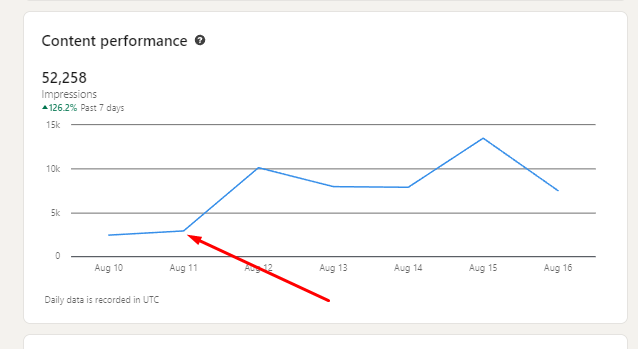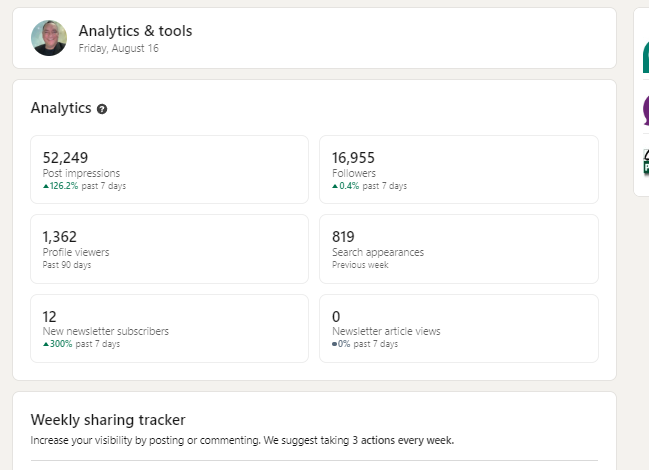By all accounts, Jason Hill was a skillful entrepreneur with a hot new idea on his hands. He’d created an app that reverse-engineered the scheduling process to enable instant networking, allowing entrepreneurs and business owners to easily connect with experts through 1:1 phone calls, fostering valuable relationships and creating endless opportunities. Now, he just needed to get his new venture some attention.
It wasn’t long after his Owwll app launched that Hill encountered a well-known LinkedIn marketing executive at a networking event. Impressed with his knowledge and sales pitch, Hill decided to work with the marketer to enhance his LinkedIn presence and generate more leads.
“LinkedIn is where my target audience hangs out, so it made sense to me to build Owwll’s brand up and my personal brand up on LinkedIn to get people to sign up for the app,” Hill said. Calling his app “LinkedIn on steroids,” it replaces the direct message (DM) function on LinkedIn by allowing users to connect directly via audio calls with subject matter experts.


Boosting vanity metrics…one engagement pod post at a time
Part of the marketer’s growth strategy for Owwll involved using engagement pods to boost visibility on LinkedIn. “I’d been in engagement pods before I met him, but they were pods with friends,” said Hill. “There’d be groups of 10 of us who would support each other’s posts, and I think that kind of engagement pod is OK.”
The marketer wasn’t using that kind of engagement pod. He enlisted automated tools Podawaa and LinkBoost which promise to get tons of likes and comments on LinkedIn posts for their customers. Both require users to download an internet browser extension, which makes users vulnerable, said data analyst and Spot-A-Pod founder Daniel Hall. “Any time you connect your LinkedIn account to a pod or Chrome extension, you may be giving them full access to control your account to act on your behalf,” he said.
These engagement pods let users target specific LinkedIn posts and then choose how many interactions they want from other pod users on those posts. Users can even upload pre-approved comments for the pod to choose from when interacting with their posts.
“The scary part is you can make these people in pods say anything you want them to say,” said Hall. “It could technically lead to lawsuits or reputation damage.”
Engagement pod results are part of the addiction
Hill said he blames social media companies for the rise of engagement pods because of the way they design their algorithms.
The platforms reward users who get the most likes, shares, and follows by boosting their visibility, which can quickly become addictive. And all that engagement turns pod users’ vanity into advertising money for those social platforms that turn a blind eye to the behavior.
“Did it work? 100%,” said Hill. “That’s the addiction.”
Although the marketer’s engagement pods usage grew Hill’s LinkedIn accounts, he said he didn’t think the copy was better than what he produced before himself. “It was just getting more eyeballs on it now because of the pods,” he said.
Advancements in AI technology tools have contributed to the problem, making it easier for anyone to produce the kind of long-form copy and videos social media algorithms adore. “So, the creator economy has turned to engagement pods to get the edge on vanity metrics,” Hill said. “The result is two outcomes. Either you don’t get good leads from the pods, or you do get some viable leads, which makes the addiction worse.”
He eventually asked the marketer to remove him from the automated engagement pods he had used to build his brands on LinkedIn. But that doesn’t mean he’s stopped relying on the power of groups to boost his visibility online.
To this day, Hill said he’s in a pod with 50 people. However, they’re real people he’s connected with who meaningfully engage with his posts. “I’ve jumped on calls with these people, I like these people,” he said. “And I think this is OK. You might think differently if you have a black-and-white view that all pods are bad, but I think this falls into those shades of gray.”

Turning a blind eye to engagement pods
Hill said he doesn’t fault the marketer for putting him into pods or speaking positively about them. He acknowledges that he went into it with his eyes wide open. His real issue is with marketers who sell their services on a lie because they use engagement pods and don’t disclose that to their clients.
According to industry insiders, an estimated 9 out of 10 LinkedIn marketing services use engagement pods for their clients, often without full transparency about the practice. Some agencies openly advocate for engagement pods as a growth strategy, while others quietly implement them without informing clients.
Even when disclosed, many clients may not fully grasp the mechanics and implications of engagement pods. They may view it simply as another promotional tactic, akin to paying to boost a post, without understanding the artificial nature of the engagement.
“Clients are often led to believe they’re joining legitimate networks of 500-plus real people when in reality they’re entering orchestrated engagement groups,” said Hill. “But you’re also seeing a lot of people who find out later turning a blind eye to it. They’re not stupid, but they justify it by saying it’s not them, it’s who they hired doing it.”
“When people chase money, they get cloudy-minded and make poor decisions. The promise of more likes, comments, and ultimately more business drives them to continue in pods, even if they compromise the integrity of their online presence.”
– Jason Hill
Chasing the social media visibility lottery
Social media algorithms prioritize content with high engagement metrics, inadvertently incentivizing users to seek artificial means of boosting their visibility.
“LinkedIn could easily crack down on this practice but chooses not to, likely because it keeps users active and engaged on the site,” said Hill.
However, this passive acceptance of pods raises questions about the platform’s commitment to genuine user engagement versus raw activity metrics. The allure of financial gain through increased visibility often clouds users’ judgment, leading them to participate in these artificial engagement schemes.
“When people chase money, they get cloudy-minded and make poor decisions,” said Hill. “The promise of more likes, comments, and ultimately more business drives them to continue in pods, even if they compromise the integrity of their online presence.”
Hill likened social media success to the lottery, where users chase the slim chance of going viral instead of building meaningful relationships. “People are chasing the lottery effect, and they’re skipping out on building real relationships one-to-one,” he said. “While social media virality may grab attention, it rarely leads to lasting opportunities; real leads come from fostering meaningful connections through networking.”

A final word about engagement pods
Hill offered some words of wisdom for anyone considering joining an automated engagement pod. His biggest concern is the impact on a pod user’s social media feed. Participation in large pods can skew a social media platform’s algorithm, causing it to prioritize content from pod members over more relevant posts.
“People are commenting and liking from the pods, but they don’t really care about your brand or its success,” said Hill. “Will you get leads from this? Not really. Most times it doesn’t turn into real business. It’s just those vanity metrics.”
Pursuing authentic engagement may not be as sexy, but it’s more beneficial in the long run. It’s better to be in small pods with networking partners you know and trust, Hill said, like what he’s done in the past and returned to after his experience with automated engagement pods.
“These smaller, more focused pods are real professionals and people I want to see in my feed. What I’m not OK with is the pod with 1,000 people in it, some of which aren’t even real,” he said. “That’s just gaming the system.”
Hijacked by Pods: It Can Happen to Anyone
Just how easy is it to have your LinkedIn post—or any social media post—targeted by an engagement pod user? The answer might make your skin crawl.
Even if you’re not in an engagement pod yourself, all anyone needs is a shareable link to one of your posts to wreak havoc. They can then take that link and feed it to the pod of their choice, push it out to their pod buddies, and flood your post with AI-generated comments from fake and real accounts.
Daniel Hall, a data analyst and founder of Spot-A-Pod, showed us how your post can get hijacked by engagement podders without your consent. He walked us through the process step-by-step using one of his posts. “It’s not rocket science,” he said. “Anyone can do it and do it easily.”
Here’s how it works.
First, you would join an engagement pod platform like Lempod, Podawaa, or LinkBoost if you didn’t already belong to one. Then, once inside, you join individual pods within the platform.
Once you’re in, you can use your pod privileges to boost your own posts or target someone else’s. Seeing is believing. Check out how Hall targeted one of his posts in this YouTube video.
Have questions about the dangers of engagement pods? Drop them in the comments. Don’t forget to check out our other engagement pod posts in Reflections to learn more about the dangers of these vanity-metric-boosting platforms.

